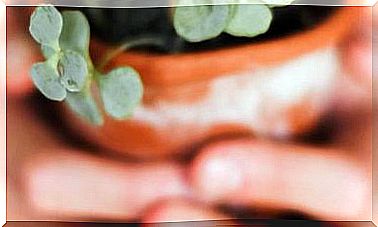What Is Actually The Intestinal Flora And How Does It Work?
The bacterial population of the intestine is one of the most complex systems in the body. Studies reveal how it influences health and the immune system.

The intestinal bacterial flora is one of the most complex systems in the body. What we know today is that in the intestine there are about ten times more bacteria than cells and about a hundred different genes of microorganisms for each cellular gene. They all do their job helping to maintain health.
Some aspects of the bacterial flora remain a mystery. It occurs because the intestinal environment is anaerobic, without oxygen; This means that the newly expelled faeces are altered in such a way that they soon lose their most notable microbial components and are therefore difficult to study. However , today we know much more about the types of flora that exist, the specific genome of bacteria, what can cause bacteria families to alter, and what can help maintain it.
The genome of bacteria
René Dubos considered that the native intestinal flora is made up of lactobacilli, anaerobic streptococci and asteroids; These allied groups are accepted by the immune system as if they were part of cells. But stool cultures only detect enterobacteria, enterococci, pseudomonas and anaerobic sporulates, easy to culture and with greater resistance to oxygen.
The difficulty of knowing the families of bacteria that live in the intestine due to not being able to cultivate them has promoted metagenomics, which studies their genes and sequence and analyzes the genetic material of an entire sample without the need to isolate and cultivate each of the organisms present in she.
The functions of the genes found are being studied and it has been seen that they belong to two groups: those that are required by all bacteria to live and those specific to live in the intestines.
Gut bacteria perform useful functions, such as fermenting carbohydrates for energy or assimilating vitamins.
Secondary metabolism genes have also been found that produce enzymes to break down pectin, sorbitol, and other complex sugars found in fruits and vegetables that the body is unable to metabolize.
In addition, these microorganisms produce important compounds for the proper functioning of the body, such as:
- Acetate : valuable for muscle, brain and heart cells.
- Propionate : used in the process of neoglycogenesis, it helps the liver to produce ATP.
- Butyrate : important for the enterocytes, provides energy to the cells of the intestine and can prevent cancer.
- Essential amino acids.
- Vitamins.
Three types of intestinal flora
It is not clear whether the species composition and genetic load of the gut microbiota varies depending on the geographic location of human populations.
According to René Dubos, circumstances that seem to appear as an inevitable consequence of genetic endowment are actually determined by the microbial environment. This Dubos proposal is confirmed more and more every day, since the conditions of our development and environmental adaptation are genetic, but they depend not only on our genes but also on the genome of our bacteria.
Similar to what happens with blood groups, three types of bacterial flora (enterotypes) have been described according to the predominant genes.
Each enterotype uses a different metabolic mechanism for energy production. In addition, depending on the enterotype, the production of certain secondary metabolites, such as vitamins, is done in different proportions. Enterotypes I and II are the ones that synthesize the greatest variety of vitamins (for example, biotin, thiamine or riboflavin).
This classification would make it possible to establish relationships between the type or state of the intestinal flora and the health of the person, and explain the different response of each one to the intake of food or drugs.
Likewise, it must be remembered that the bacteria present in fecal samples do not represent the full range of microorganisms that inhabit the intestines, so the enterotypes obtained could be preliminary.
Bacterial flora: a personal ecosystem
Each person experiences an affinity, tolerance or intolerance to certain foods. It is important to know that it depends to a large extent on its microbial flora and that inducing a change in it can help in this regard.
- Recently it has been described that through the presence of oxalobacteria the intestine metabolizes oxalate crystals, so abundant in certain foods ( spinach, chard, chocolate … ). People who do not have this bacterium have abundant oxalic acid crystals in their stool and urine.
- It is known from experiments in obese mice that mice lacking leptin, a regulator of lipid metabolism, have a different intestinal flora than lean mice.
- Other microbial components cause nutritional deficiencies. It has been observed that the animal to which small amounts of antibiotics is supplied with the feed, have higher growth rates. The benefits of these practices are not observed in germ-free animals, nor in animals raised in healthy conditions.
The exact mechanism of this phenomenon is unknown; on the contrary, this practice encourages allergies in consumers and increases resistance to antibiotics. It is risky to extrapolate these findings from short-lived, “industrially” raised animals to animals in the natural environment, let alone humans, who want to live long and healthy (even if they don’t grow that long).
The intestinal flora stimulates the development and maturation of certain tissues and organs, as observed in germ-free animals. It has been suggested that the structure of the so-called “normal intestinal mucosa” corresponds, in fact, to a kind of physiological inflammation. And therefore anti-inflammatory treatments feel bad for him.
It seems as if the bacteria of the usual flora “mold” the intestine and “harden” it to withstand the attack of successive pathogens.
The infant flora
The newborn does not have bacteria in the intestinal tube, it is colonized by those of the mother. In general, it is highly desirable that the fecal, pharyngeal and superficial flora of the mother be transmitted to the child.
The head of the child in the birth canal drags feces at the exit, passes in contact with the vaginal flora, receives kisses and hugs from its mother and strongly sucks the bacteria from her nipple. Under natural conditions, long breastfeeding ensures efficient transmission in solidarity with indigenous intestinal bacteria, family bacteria that are inherited almost as much as genes.
This delivery of associated bacteria defends the child from unwanted colonization. The lactic flora not only protects with its spatial blockage and its lowering of pH, but it can also produce bacteriocytes, antibiotics that are harmless for the child but very effective against other germs.
Unfortunately, these bacterial partners are extremely sensitive to applications and treatments with disinfectants and antibiotics, so these should be administered with care and only in cases of obvious indication.
Since the intestinal flora helps to stimulate the immune system and trains to respond appropriately to antigens, the lack of these bacteria in the first years of life leads to an immune system that overreacts to foreign antigens and produces allergy problems and autoimmune diseases.
Once breastfeeding is completed, the infant flora, associated with the intestinal mucosa , will persist for life, although it remains hidden due to the difficulty of culture and the colonization of enterobacteria. When breastfeeding is supplemented with other foods, the child’s intestinal flora is gradually modified.
Very useful bacteria: what is the intestinal flora good for?
The metabolic activities carried out by bacteria resemble those of an organ; but it would be a forgotten organ.
Bacteria and nutrition
Microorganisms perform useful functions, such as fermenting food substrates (food scraps) to produce energy. Carbohydrates, which humans cannot digest without the help of bacteria, include certain starches, fiber, oligosaccharides, and sugars.
Changing the number and species of the intestinal flora can reduce the body’s ability to metabolize carbohydrates and cause diarrhea. Carbohydrates that don’t break down can soak up a lot of water and make your stools runny.
In turn, the bacteria ferment carbohydrates in a form of fermentation called saccharolytic. The products of this fermentation include acetic acid, propionic acid, and butyric acid.
These materials can be used by the cells of the body and provide a remarkable source of useful energy and nutrients, as well as helping the body absorb essential dietary minerals such as calcium, magnesium and iron, organic acids and necessary vitamins such as vitamin K.
Bacteria also promote the increase, absorption and storage of lipids.
Changes in the number of intestinal bacteria, for example as a result of taking broad-spectrum antibiotics, can affect health and the ability to digest food.
Bacteria and cancer
The fermentation process, by producing lactic acid and different fatty acids, also serves to lower the pH in the colon, thus preventing the proliferation of harmful species of bacteria and facilitating the proliferation of useful species. The pH can also improve the elimination of carcinogens.
The intestinal flora plays a prominent role in the metabolism of dietary carcinogens. Bacteria in the digestive tract can also produce toxins and carcinogens, and are sometimes implicated in multi-organ failure, sepsis, colon cancer, and inflammatory bowel disease.
Some genera of bacteria, such as Bacteroides and Clostridium , have been associated with an increase in the growth rate of the tumor, while other genera, such as the Lactobacillus and Bifidobacterium, are known to prevent the formation of tumors.
Bacteria and the immune system
In addition, by producing a barrier effect, bacteria prevent pathological species from injuring and colonizing the intestine.
Bacteria are the key in promoting early development of the gut’s mucosal immune system, which recognizes and fights harmful bacteria and respects beneficial ones.
The effect of medications on the intestinal flora
There are “bacterial ecosystems” in the gut. All are in equilibrium under normal conditions and fulfill their function, some as important as contributing to the post-embryonic development of intestinal microvilli.
These bacterial ecosystems are controlled by viruses (phages) that always accompany bacteria and are, together with plasmids (of viral origin), which make possible the exchange of genes between bacteria.
That is, bacteria are not pathogenic in themselves, but rather “become malignant” (defend themselves) as a consequence of some type of aggression or imbalance in their natural environment through the exchange of genes (“islets of pathogenicity”) with others. This is the mechanism by which antibiotic resistance genes are transferred.
Antimicrobial drugs can alter the ecology of the intestine and induce infections in various organs caused by microbes of low pathogenic power. One interpretation is that the administration of such drugs eliminates certain components of the native flora that keep potentially pathogenic organisms at bay.
A telling example: the Clostridium dificcile seems to be part of the normal flora, albeit in small amounts, so it does not cause diarrhea; but certain antibiotic treatments with macrolides (erythromycin and derivatives) free it from competitors, so that they grow exuberantly until producing severe or chronic diarrhea that lasts for several months.
The Escherichia coli is a common bacteria found in the intestines of animals, especially ruminants, and also in people. Specifically, E. coli helps digestion by breaking down complex molecules and manufactures vitamins of groups K and B. It is a highly manipulated bacterium to carry genetic loads, measure antibiotic resistance and prepare probiotics.
There are hundreds of strains of E. coli, most of them harmless, but there is also a group, called enterohemorrhagic E. coli, that can produce powerful toxins (Shiga toxins or verotoxins) that damage red blood cells and kidneys. There are published works on this bacterium and its effects on laboratory mice.
The Escherichia coli O104: H4 is recombinant other, among which is the Shigella, other bacteria of the intestine which is normally in equilibrium with the other and which may exert an important role, because when a malignant melanoma has catastrophic consequences. This type of recombination can only occur with massive treatment with antibiotics.
How to take care of our intestinal flora?
Preserving and caring for the bacterial balance brings health. Some tips to maintain the balance of the natural ecosystem of our intestine are:
- Consume natural products, without additives or added sugars.
- Avoid antibiotics and other antimicrobial drugs.
- Eat a diet rich in fiber (whole grains, fruits, vegetables, etc.), which feeds intestinal microorganisms
- Avoid stomach antacids ; These decrease heartburn, which is a true barrier to many undesirable microorganisms that later colonize the lower intestines.
- The spices used in the kitchen, such as oregano, thyme, sage, ginger, pepper or cinnamon, intervene in the digestive flora, acting as controllers of the pathogenic flora and helping the development of beneficial bacteria. In addition, sight, smell and taste make us feel a great affinity for them naturally.
- Looking for a good bacterial flora in food is knowing how to appreciate them for their color, aroma and pleasant smell, savoring them, appreciating each food for its properties and its good natural state, without the need for additives.
Fermented foods, the friends of the intestine
- Better on an empty stomach. Yogurt, sauerkraut, kefir, pickles, vinegar … have traditionally been used to implant or feed bacterial flora. However, the microorganisms commonly found in such foods often do not survive once in the digestive tract.
For example, a large part of the predominant live strains in yogurts are Lactobacillus bulgaricus and Streptococcus thermophilus , which cannot colonize the intestinal mucosa because they die when passing through gastric and bile acids. Better to take them, then, on an empty stomach. - Refrigeration. Careful refrigeration is recommended for most products to promote more viable probiotic bacteria. Although, in fact, the degradation products of microorganisms killed by the action of gastric acids can provide probiotic benefits.
- Pasteurization. It is important to buy those products whose probiotic organisms are added after pasteurization; otherwise, the bacteria die during the process. It is better to use products that clarify that they “contain active cultures” or “live strains” and at the same time controlled and non-pathogenic.
The influence of stress
The intestinal bacteria are involved in the mechanisms of stress.
Fear or anxiety depend on the secretion of serotonin, which is generated more in the intestine than in the brain. The psychological situation in a moment of nervousness influences the intestinal bacterial system and can trigger the urge to evacuate.
For this reason, it is important to avoid stressful situations, especially during meals : you have to get used to eating calmly, chewing and salivating well : the lysozyme in saliva has a certain antibiotic effect against harmful microorganisms.









